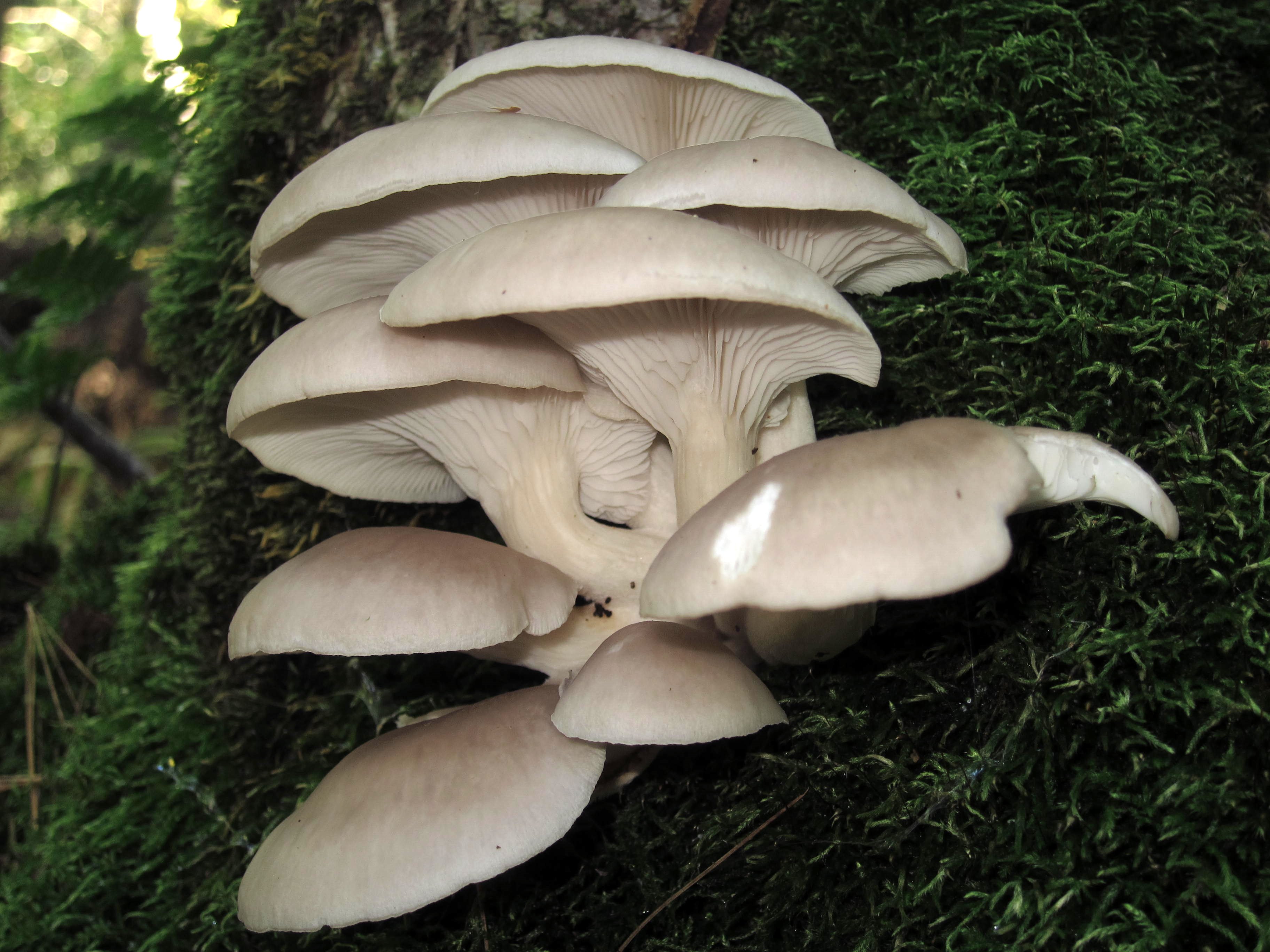
Oyster mushroom
Pleurotus ostreatus
What are Oyster mushrooms (Pleurotus ostreatus)?
Oyster mushrooms (Pleurotus ostreatus) are edible gilled mushrooms with an oyster-like appearance. They are found in temperate and subtropical regions and can infect hardwood trees like oak, beech, and poplar. Acting saprophytically, they decompose dead wood, benefiting the ecosystem by returning essential elements. Oyster mushrooms form fruiting bodies on tree trunks or branches but do not parasitize living trees. Their caps are fan-shaped, ranging in colors from white to gray or brown, with a smooth surface and wavy margins. The firm, white flesh varies in thickness. The gills are white to cream, descending on the stalk if present. Notably, oyster mushrooms can bioaccumulate lithium.
How do Oyster mushrooms (Pleurotus ostreatus) occur?
Oyster mushrooms (Pleurotus ostreatus) reproduce through spore formation. Spores are produced in the gills beneath the mushroom cap. Dispersed by wind, water, or animals, these spores land on suitable organic matter and germinate into mycelium. The mycelium then grows and spreads, absorbing nutrients from the substrate. Eventually, under favorable conditions, the mycelium forms fruiting bodies, which are the visible mushrooms that we harvest and consume.
Symptoms
1 - Side Effects
People allergic to mushrooms may experience skin rashes, chills, fever, pain, itching, or swelling of the mouth and throat.
2 - Impacts on Ecology
• This mushroom is unique because it is one of the few carnivorous fungi. Its mycelia can kill and digest nematodes, providing nitrogen that benefits plant health and crop production. • .They contribute to the diversity and overall health of forest ecosystems.
3 - Effects on Soil
• They break down the organic matter, returning essential elements and minerals to the ecosystem and facilitating nutrient cycling. Their mycelium helps improve soil structure, moisture retention, and nutrient availability. • They live in a mutually beneficial relationship where the mushroom's mycelium aids in nutrient uptake by the plants, while the plants provide carbohydrates to the mycelium.
4 - Economic and Medicinal effects
• Their delicate flavor and meaty texture make them a popular choice for stir-fries, soups, salads, and other culinary creations. • Their high demand in the food industry has led to increased cultivation, providing livelihood opportunities and income generation. • They have been used as traditional medicine, having properties such as antimicrobial, anti-inflammatory, and immune-modulating effects.
Solutions
1 - Preventive Measures for Side Effects
• If you have known allergies to mushrooms, avoid consuming oyster mushrooms or any other types of mushrooms to prevent allergic reactions. • When trying oyster mushrooms for the first time, start with a small portion to test for any allergic reactions before consuming a larger quantity. • A serving size of oyster mushrooms is typically one cup daily, providing a balanced nutrient intake. • Buy oyster mushrooms from reliable sources to avoid wild mushroom-related food poisoning.
2 - Preventive Measures for Ecology
• To protect the natural ecosystem, avoid introducing oyster mushrooms to environments where they are not naturally found. • Do not intentionally release oyster mushrooms or their mycelia into the wild, as they can disrupt the balance of native species.
